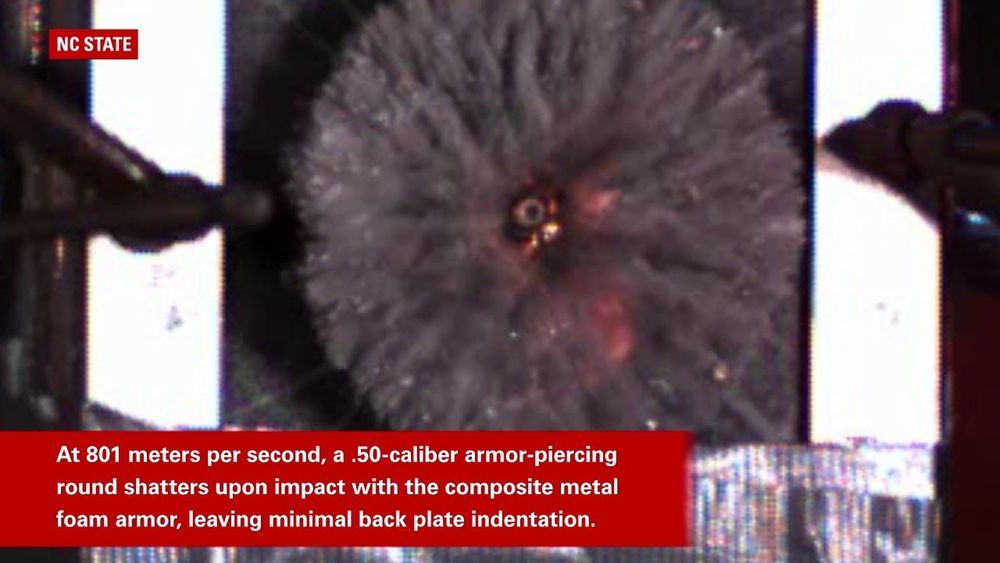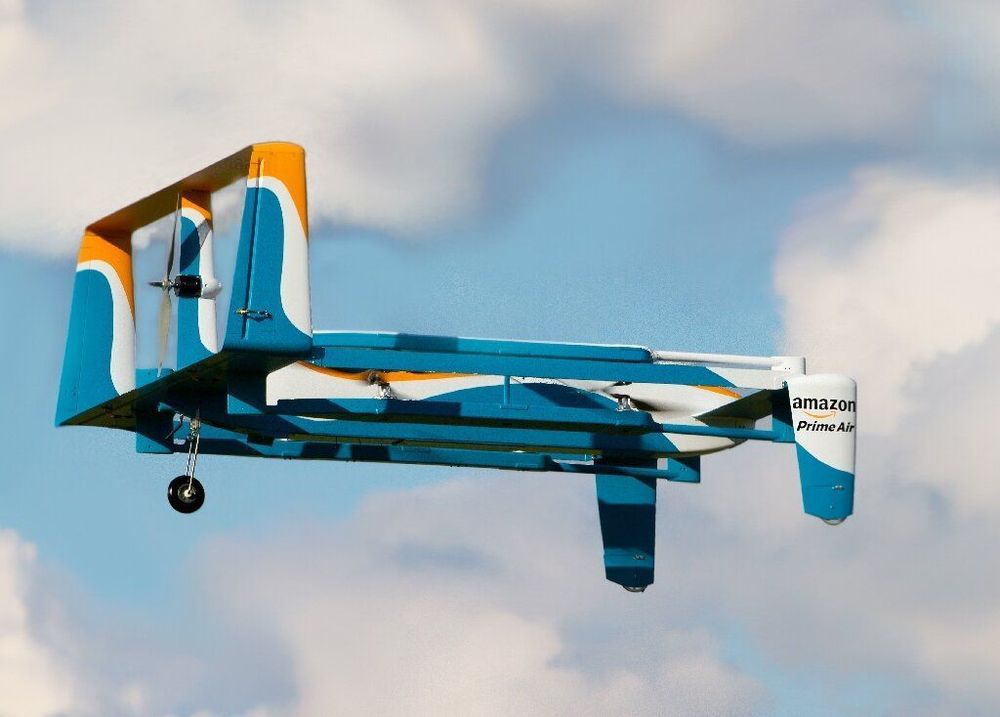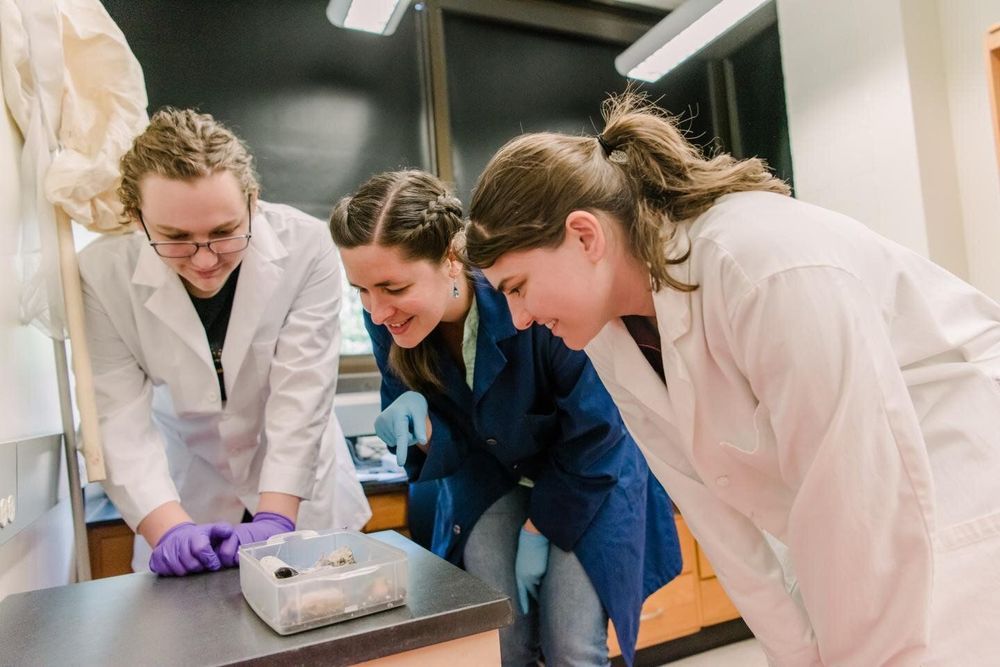Page 8733
Jun 6, 2019
Jeff Bezos wants to build the infrastructure for space startups
Posted by Klaus Baldauf in categories: business, robotics/AI, space travel
At its re: Mars conference, Amazon’s CEO Jeff Bezos took the stage today to be “interviewed” by Jenny Freshwater, Amazon’s director of forecasting. As any AWS machine learning tool could have forecasted, having an employee interview her boss didn’t lead to any challenging questions or especially illuminating answers, but Bezos did get a chance to talk about a variety of topics, ranging from business advice to his plans for Blue Origin.
We can safely ignore the business advice, given that Amazon’s principle of “disagree and commit” is about as well known as it could be, but his comments about Blue Origin, his plans for moon exploration and its relationship to startups were quite interesting.

He noted that we now know so much more about the moon than ever before, including that it does provide a number of resources that make it a good base for further space exploration. “The reason we need to go to space is to save the Earth,” he said. “We are going to grow this civilization — and I’m talking about something that our grandchildren will work on — and their grandchildren. This isn’t something that this generation is able to accomplish. But we need to move heavy industry off Earth.”
Continue reading “Jeff Bezos wants to build the infrastructure for space startups” »
Jun 6, 2019
Destiny 2 Google Stadia version is real and comes with everything through Shadowkeep
Posted by Quinn Sena in category: entertainment

https://youtube.com/watch?v=92ZTyVWzTNc
The complete Destiny 2 package is coming to Google’s new gaming platform.
Based on the original ballistic woven nylon developed for military body armor, dense, rugged CORDURA® Ballistic fabrics are made with high tenacity nylon 6,6 filament yarns and offer enhanced tear and abrasion resistance.
Jun 6, 2019
Amazon says drone deliveries coming ‘within months’
Posted by Quinn Sena in categories: drones, robotics/AI, space
Amazon said Wednesday it expects to begin large-scale deliveries by drone in the coming months as it unveiled its newest design for its “Prime Air” fleet.
Jeff Wilke, head of Amazon’s consumer operations, told the company’s Machine Learning, Automation, Robotics and Space conference in Las Vegas that drones would play a role in ramping up efforts to shorten delivery times for many items to just one day for Amazon Prime members.
“We’ve been hard at work building fully electric drones that can fly up to 15 miles (25 kilometers) and deliver packages under five pounds (2.3 kilos) to customers in less than 30 minutes,” Wilke said in a blog post.
Continue reading “Amazon says drone deliveries coming ‘within months’” »
Jun 6, 2019
Mushrooms Clean Up Toxic Mess, Including Plastic. So Why Aren’t They Used More?
Posted by Quinn Sena in category: materials
Jun 6, 2019
Driverless cars: once they’re on the road, human drivers should be banned
Posted by Quinn Sena in categories: media & arts, robotics/AI
Self-driving cars could revolutionise people’s lives. By the end of the next decade, or perhaps even sooner, they could radically transform public spaces and liberate us from the many problems of mass car ownership. They’ll also be much better behaved than human drivers.
Robot drivers won’t break the speed limit, jump the lights, or park where they shouldn’t. They won’t drive under the influence of drink or drugs. They’ll never get tired or behave aggressively. They won’t be distracted by changing the music or sending a text, and they’ll never be trying to impress their mates.
Driverless cars could also change the face of public spaces. Private cars are very expensive items that do absolutely nothing 95% of the time. They are economically viable only because paying a taxi driver for all your car journeys would be even more expensive. Once cars don’t need human drivers, this cost balance should tip the other way.
Continue reading “Driverless cars: once they’re on the road, human drivers should be banned” »
Jun 6, 2019
First-ever spider glue genes sequenced, paving way to next biomaterials breakthrough
Posted by Quinn Sena in categories: biotech/medical, genetics
UMBC postdoctoral fellow Sarah Stellwagen and co-author Rebecca Renberg at the Army Research Lab have published the first-ever complete sequences of two genes that allow spiders to produce glue—a sticky, modified version of spider silk that keeps a spider’s prey stuck in its web. The findings appeared in Genes, Genomes, Genetics.
The innovative method they employed could pave the way for others to sequence more silk and glue genes, which are challenging to sequence because of their length and repetitive structure. Better understanding of these genes could move scientists closer to the next big advance in biomaterials.
Jun 6, 2019
Metal foam stops .50 caliber rounds as well as steel – at less than half the weight
Posted by Quinn Sena in categories: materials, military

Researchers have demonstrated that vehicle armor using composite metal foam (CMF) can stop ball and armor-piercing .50 caliber rounds as well as conventional steel armor, even though it weighs less than half as much. The finding means that vehicle designers will be able to develop lighter military vehicles without sacrificing safety, or can improve protection without making vehicles heavier.
CMF is a foam that consists of hollow, metallic spheres—made of materials such as stainless steel or titanium—embedded in a metallic matrix made of steel, titanium, aluminum or other metallic alloys. In this study, the researchers used steel-steel CMF, meaning that both the spheres and the matrix were made of steel.
Jun 6, 2019
Scientists identify gene that helps people live to a ripe old age
Posted by Quinn Sena in categories: biotech/medical, genetics, neuroscience
Researchers at Amsterdam’s UMC have identified a rare gene that halves people’s chances of developing dementia in old age.
People with the genetic variant, which occurs in around 1% of the population, are also more likely to live longer. The researchers studied 16 different sample populations in Europe and North America, including a number of people over the age of 100, for the study published in the journal Acta Neuropathologica.
The discovery could potentially be used to treat Alzheimer’s disease and other degenerative illnesses such as frontotemporal and Lewy body dementia.
Continue reading “Scientists identify gene that helps people live to a ripe old age” »
















